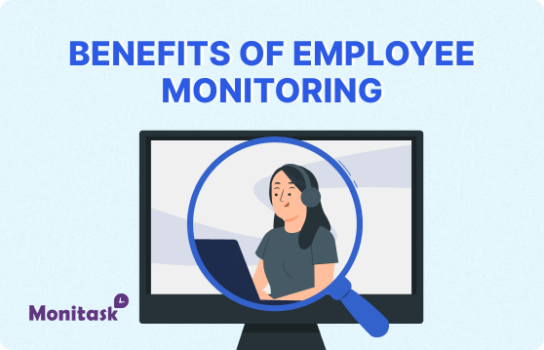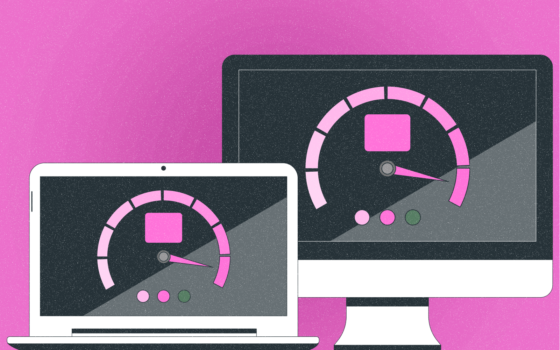The Top 11 Employee Incentives: How to Motivate Your Team with Rewards and Benefits

Do you ever feel like you’re stuck in a never-ending cycle of trying to motivate your team without much success? If the answer is a very tired: yes! Then, read on as in this blog post, we will breach the TOP Employee Incentives to Motivate Your Team with Rewards and Benefits!
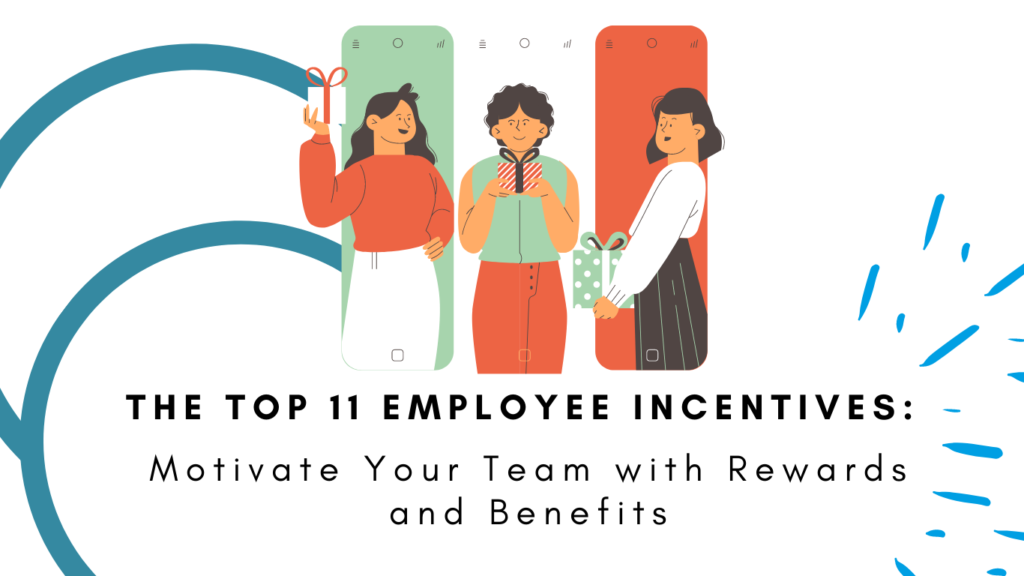
Employee incentives are becoming increasingly popular in the business world as a way to motivate employees and improve productivity. Nevertheless, employee incentive programs are not exactly new, in fact, they are around 2,600 years old!
Cyrus the Great and The Beginning of Employee Recognition
The first employee recognizer was Cyrus the Great, founder of the Achaemenid Empire, who reigned from 550 to 530 BC. In order to maintain control over such a vast territory, he needed the loyalty and support of his employees. So, he instituted a system of rewards and punishments to motivate his workers.
The most famous example is the story of how he rewarded his blacksmith for inventing a new type of horseshoe. The blacksmith was so motivated by the reward that he went on to invent many more useful items for the empire.
And, while this story is from a different time, the principle remains the same: people are motivated by incentives. This premise is supported by the results of a survey carried out back in 2019 by Reward Gateway, which shows that for 90% of human resources staff, effective recognition and employee incentive plans help drive business results.

As well, for 91% of human resources staff, employee retention is positively impacted by recognition and incentive. However, ONLY 22% of managers agree that their organization gives them the tools and knowledge they need to properly reward employees. So, it seems we have stumbled upon an endpoint here.

How can companies recognize their employees if they don’t have the necessary tools?
What Is An Employee Incentive?
An employee incentive is a financial or non-financial reward given to employees in recognition of their achievements or contribution to the company. These programs can be used to encourage employee productivity, improve work quality, or boost employee morale. Employee incentive programs typically involve setting specific targets for employees to reach, and then providing them with rewards if they are successful.
Employee incentives provide an effective tool to increase employee satisfaction, top talent retention rates, and loyalty
The rewards offered as part of employee motivation programs can vary depending on the company but may include cash bonuses, gift cards, paid time off, or tickets to events. While employee incentive programs can be beneficial for businesses, it is important to carefully consider the goals of the program before implementing it, as well as the types of rewards that will be offered. Otherwise, these programs may not be effective in achieving their desired results.
The Value of Employee Incentives
Employee incentive programs can be beneficial for businesses, but it is important to carefully consider the goals of the program before implementing it, as well as the types of rewards that will be offered. Otherwise, these programs may not be effective in achieving their desired results.
When done correctly, employee motivation programs offer a number of benefits for businesses, including:
- Improved Employee Productivity: By setting specific targets and offering rewards for employees who reach them, businesses can encourage employees to work harder and improve their productivity.
- Increased Employee Engagement: Employees who feel appreciated and valued are more likely to be engaged with their work and motivated to do their best.
- Improved Employee Retention: Implementing an employee motivation program can show employees that they are valued by the company, which can encourage them to stay with the business for a longer time.
- Reduced Employee Turnover: In addition to improved retention, employee incentive programs can also reduce turnover rates by making employees feel more satisfied with their job.
- Improved Quality of Work: By offering rewards for employees who produce high-quality work, businesses can encourage all employees to raise their standards and improve the overall quality of the company’s output.
- Enhanced Company Reputation: Employee incentive programs that are well-designed and offer valuable rewards can enhance a company’s reputation, making it more attractive to top talent.
As you can see in the image by the HiFives, a platform focused on employee rewards and recognition, implementing employee incentives programs in your company is a win-win situation!

However, can these programs be implemented all year round? Can some of these programs be seasonal? Per project? Team-based? Let’s find out!
When Do Incentive Programs Work Best?
Incentive programs are designed to motivate employees to achieve specific objectives. However, designing an effective incentive program requires balancing 3 axes: objectives, budget, and timing.
- Objectives: Research suggests that employee incentive programs are most effective when they are based on specific, measurable goals and when employees have a clear understanding of what they need to do to earn the incentive.
According to a study by Think Smart, and cited by DCR Strategies, companies that use incentive programs have a 79% success rate in meeting their objectives provided the right reward is presented.
- Budget: Incentives should be designed with the company’s budget in mind and should not break the bank. Otherwise, they will not be sustainable in the long-term.
The incentive market in the United States is worth $90 billion each year, and these figures are going up with the passing of time! According to the Society for Human Resource Management, in one of their 2018’s surveys, you should invest 1% of payroll for employee recognition.

Source: “Using Recognition and Other Workplace Efforts to Engage Employees” by the Society for Human Resource Management, 2018.
As you can see, in the chart above, when companies invest at least 1% of payroll in their employee appreciation program, 56% of HR professionals are more likely to assess it as good. When recognition is at the heart of an organization’s talent strategy, however, the return on investment is greater with a 44% of excellent rating!
- Timing: The timing of incentive programs is also important to consider. If an employee incentive program is introduced too late, it may not be effective in motivating employees to achieve desired objectives. On the other hand, if it is introduced too early, employees may not yet have a clear understanding of what they need to do to earn the incentive.
Incentive programs should also be timed correctly so that they do not lose their impact over time
For example, offering an employee a bonus for meeting a sales target may motivate them to work harder in the short-term but may have little impact if the bonus is paid out several months after they reach the target.
According to a study by World at Work, and cited by the Society for Human Resource Management, more companies are offering short-term incentives. Back in 2017, the survey showed that 96% of the polled companies have short-term incentives plans in place.
These 3 elements are crucial when settling employee incentives, but do you know which kind of incentives is better for your company?
Types of Incentives
There are two types of incentives: intrinsic and extrinsic.
Intrinsic incentives are internal motivation factors such as a sense of satisfaction or pride. Extrinsic incentives are external motivation factors such as monetary rewards or prizes.
Both intrinsic and extrinsic incentives can be effective in motivating employees, but it is important to understand the difference between the two types of incentives in order to implement an effective employee incentive plan.
Intrinsic Incentives
Intrinsic incentives (also known as nonfinancial) are defined as an individual’s own sense of fulfillment, growth, autonomy, and self-confidence as a result of his or her work. This is a psychological reward that employees receive for doing an important job and doing it well.
Intrinsic incentives are often more effective in motivating employees than extrinsic incentives because they provide a sense of satisfaction or pride that comes from accomplishing a task or meeting a goal.
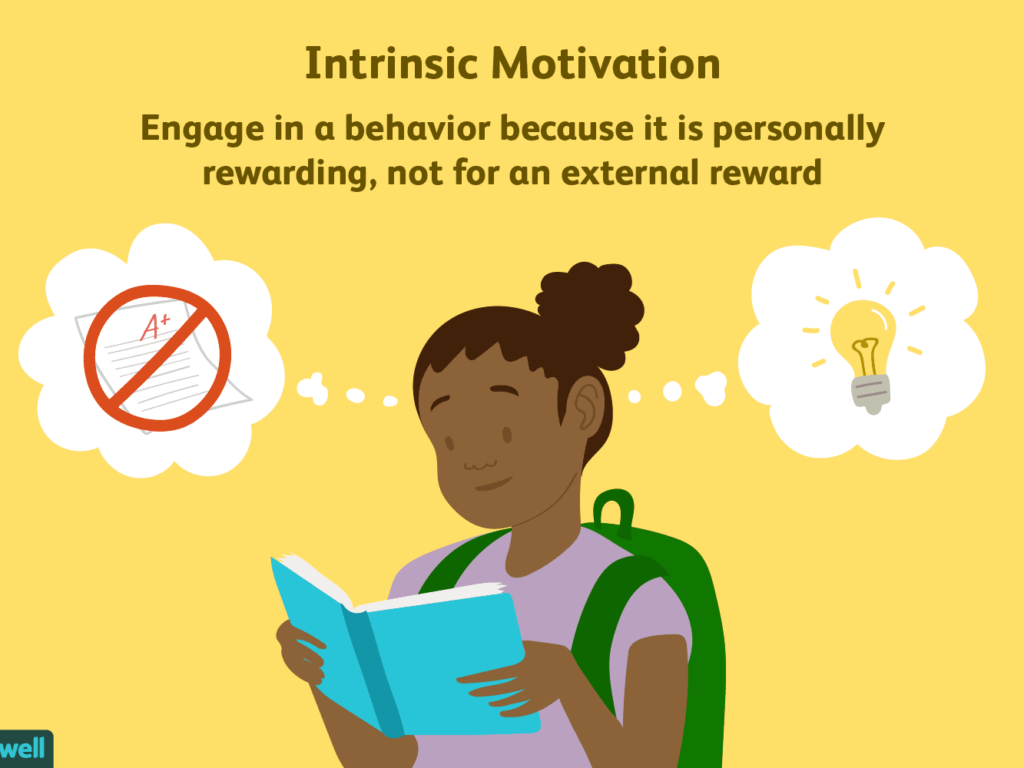
Some examples of intrinsic incentives include:
- A sense of accomplishment or satisfaction
- A feeling of pride
- A sense of ownership
- A sense of responsibility
Extrinsic Incentives
In his paper, “Recognition: A Powerful, but often Overlooked, Leadership Tool to Improve Employee Performance” by Luthans, 2000, and cited Adoko Obicci, 2015 explains that extrinsic incentives (also known as financial, tangible, or monetary) are external motivation factors that come from outside of an individual. It’s called “extrinsic” since it’s apart from the job itself, and others have control over its size and approval.
Extrinsic incentives are often less effective in motivating employees than intrinsic incentives because they can be seen as a way to manipulate or control employee behavior.

Some examples of extrinsic incentives include:
- Monetary rewards such as bonuses or commissions
- Paid time off
- Employee stock options
- Prizes or contest awards
Now, the question is: Which one works best?
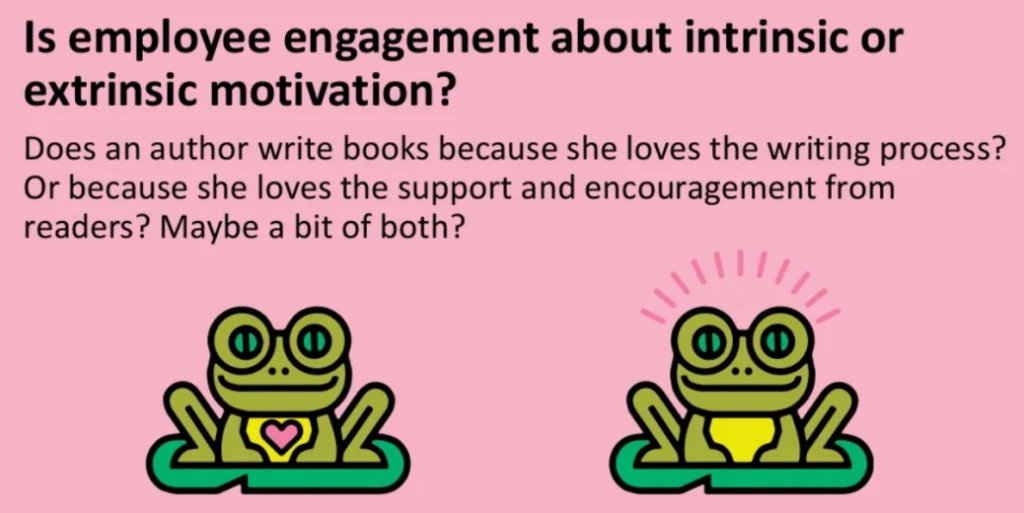
And the answer is BOTH! When designing a motivation program to reward employees, it is important to consider both intrinsic and extrinsic motivation factors in order to create a program that will be effective in motivating employees.
11 Must-Have Employee Incentive Programs
Employee incentive plans are a great way to motivate your team and improve performance. But with so many different types of employee incentives out there, it can be tough to know which ones will work best for your business.
Here are 11 employee incentive programs that are sure to get results:
Profit-Sharing
A profit-sharing plan is the kind of defined contribution plan which can be used as a replacement for the traditional 401k plan. Employees are often given a profit share plan that provides direct contributions to a retirement account and can also receive direct payment from other employees. The amount of the profit-sharing payment depends on the profitability of the company and the individual’s performance during the year.
Under a profit-sharing plan, employees are given a percentage of the company’s profits each year
Beyond obvious financial incentives in such programs, profit sharing gives employees a chance to become owners instead of employees. So, it encourages employees to remain loyal to their company as well as invest in their sweat equity to increase business growth.
Health and Wellness
Employee performance can be affected by the lack of health and fitness incentives in order to prevent burnout and promote health and wellbeing.
Some employers offer incentives for employees such as discounts on gym memberships, winning sporting events, or rewards for meeting fitness goals. Others make it mandatory for employees to participate in order to receive certain benefits, such as health insurance.
Incentives can be a powerful tool in promoting health and wellness, and they can help to create a workplace that is both productive and enjoyable
By offering rewards for healthy behavior, companies can encourage employees to make positive changes that will benefit both their health and their employer, such as quitting smoking.
Public Recognition
Money can change a lot about people’s lives – but that is not the only guarantee. Public recognition is often much stronger for the employee than tangible rewards. This is inexpensive and allows everybody to show their gratitude publicly.
A simple pat on the back or word of praise can go a long way towards making employees feel appreciated. And when employees feel appreciated, they are more likely to be productive and engaged in their work. Public recognition is a simple but effective way to show employees that their efforts are valued and that they are an essential part of the team.
Professional Development
Professional Development is important for any organization as it helps employees to be up-to-date with the latest industry trends, improve their skillsets and be more productive. By offering employees financial or other rewards for completing Professional Development courses, you can increase participation and ensure that employees are getting the most out of the experience.
In addition, employee incentives can also help to build morale and motivate employees to continue developing their skills. Professional development can take many different forms, such as attending conferences or workshops, taking online courses or even attending corporate training events.
Tuition Reimbursement
Tuition Reimbursement is an excellent employee incentive. It allows employees to further their education while still working, and it also helps to improve the quality of the workforce. In addition, Tuition Reimbursement can help to attract and retain top talent.

Employees who know that their employer is willing to invest in their education are more likely to stay with the company. Tuition Reimbursement is also a tax-deductible expense for employers. As a result, it is an incentive that benefits both employees and employers.
Pet Insurance
Offering pet insurance as an employee incentive can be a great way to attract and retain top talent. Pets are becoming increasingly popular in households across the country, and pet ownership comes with a number of financial responsibilities. Pet insurance can help employees to offset some of the costs associated with pet ownership.
According to the Society for Human Resources Management, by 2019, already 15% of companies were offering some kind of pet-related benefits, including pet health insurance.

In addition, pet insurance can be used as an employee retention tool, as it can help to keep employees with pets happy and healthy. If you’re looking for a way to show your employees that you care about them and their pets, pet insurance is a great option.
Bonus and Raises
Bonus and raises are often used as employee incentives to encourage employees to perform their best or to retain them in the company. Bonus can be given based on an employee’s individual performance or as a team incentive. Raises, on the other hand, are typically given annually and are usually percentage-based.
It is necessary to define clear goals to ensure employees know how to earn bonuses
While both bonuses and raises can be effective employee incentives, they should be used strategically in order to achieve the desired results. Bonus and raises that are too small may not be motivational, while those that are too large may cause employee satisfaction to drop. Finding the right balance is essential for ensuring that employees are motivated to perform their best.
Points-Based Recognition
Points-Based Recognition is a type of employee incentive that involves awarding points to employees based on their performance. Points can be redeemed for a variety of rewards, including gift cards, merchandise, and travel.
Many companies use Points-Based Recognition programs to motivate employees and improve performance. The number of points awarded and the value of the rewards can vary depending on the company’s budget and the importance of the task. Points-Based Recognition is a flexible system that can be tailored to the needs of any organization.
Additional Time Off
Additional Paid Time Off (PTO) is a great way to show your employees that you value their work-life balance. By offering PTO as an employee incentive, you can demonstrate your commitment to their well-being and help them to feel more engaged with their work.

In addition, PTO can help to reduce absenteeism and increase productivity. Employees who feel supported in their efforts to maintain a healthy work-life balance are more likely to be loyal and committed to their jobs. As a result, offering PTO is a smart investment that can pay off in both the short and long term.
Referral Programs
Referral programs are a great way to incentivize employees and encourage them to find high-quality candidates for open positions. By offering a monetary bonus or other prizes for successful referrals, you can create a win-win situation for both your company and your employees.
Referral programs are an effective way to attract and retain top talent
Referrals can also help to speed up the hiring process, as employees are more likely to know qualified candidates who are already interested in the position. Additionally, referral programs build goodwill among employees and foster a sense of community within the workplace. When employees feel valued and supported, they are more likely to be productive and engaged with their work.
Choice of Projects
Giving highly motivated workers the freedom to decide what project they want is an excellent way to encourage them. When workers feel like they have a say in what they’re working on, they’re more likely to be engaged and enthusiastic about their work.
Moreover, the choice of projects can also lead to more innovative thinking and better team collaboration. As a result, offering employees a choice of projects is an effective way to increase motivation and encourage higher levels of performance.
So, which one should you choose?
The answer is: it depends! The type of incentive that will be most effective in motivating employees depends on the company’s objectives and the individual preferences of employees.
Best Practices For Employee Incentive Programs
Promote Your Program
Make sure employees are aware of the program and how it works. Use posters, emails, or in-person announcements to get the word out. You can also include information about the program in employee onboarding materials.
In order to accomplish this, HR must develop promotional and communication plans so that employees know about incentive plans offerings.
Define Clear Goals
Be sure employees know what they need to do to earn rewards. The goals should be specific, measurable, achievable, relevant, and time-bound (SMART).
Monitor Progress and Give Feedback
It’s important to monitor progress and give feedback regularly as this will help employees stay on track and feel motivated. As well, be sure to set realistic goals that employees can actually achieve. Nothing is more frustrating than feeling like you’re working towards an impossible target.
For example, if an employee is given an incentive for completing a project on time, it is important to check in regularly to ensure that the project is on track.
Final Considerations
It can be tough to choose the right employee incentive programs, but with a little thought and planning, you can create an incentives package that will have your employees excited to come to work each day.
Remember that incentive programs should not be used as a substitute for good management practices. Instead, they should be used to supplement other management practices such as clear communications, training, and development opportunities.
By choosing wisely and including your employees in the decision-making process, you can create a winning team spirit that leads to increased productivity and success. What type of employee incentive program works best for you?

